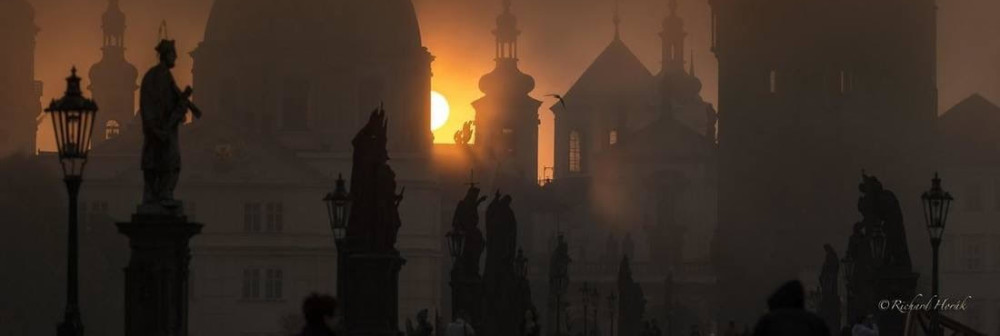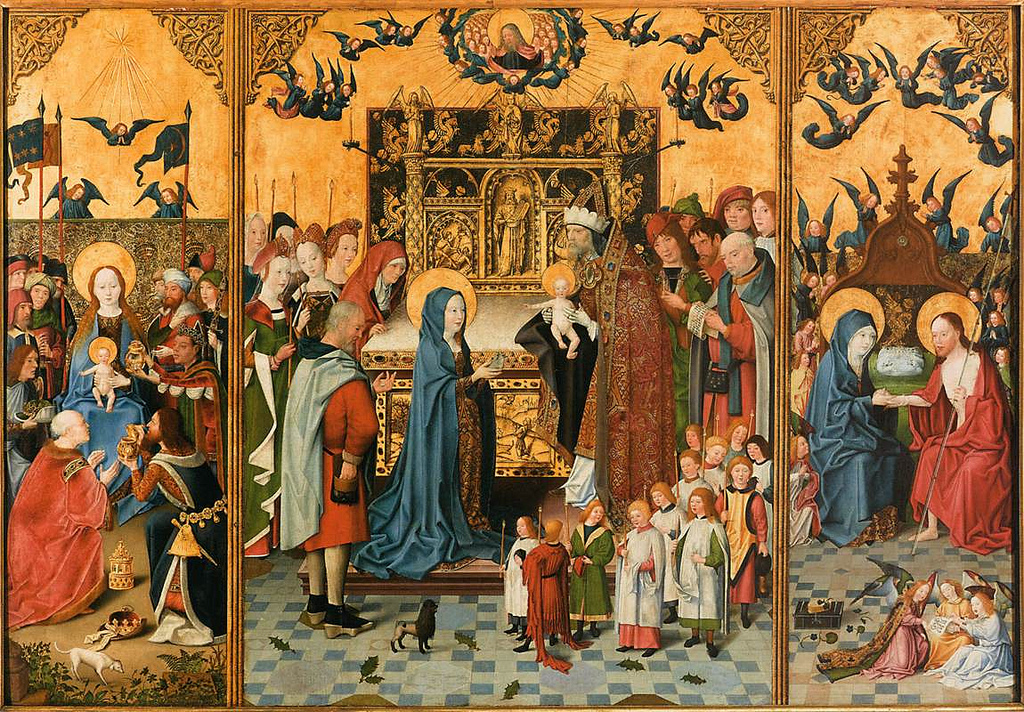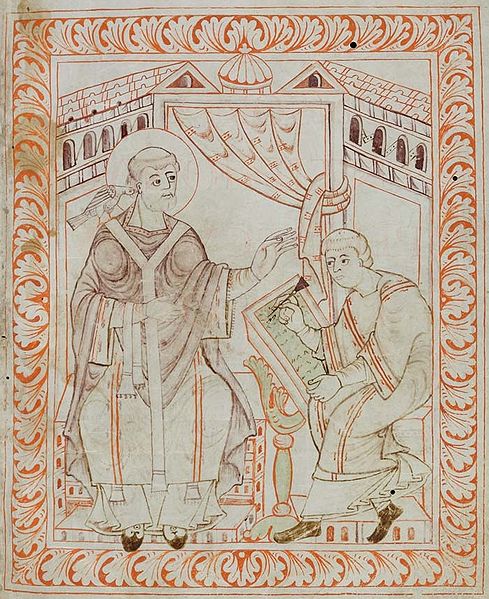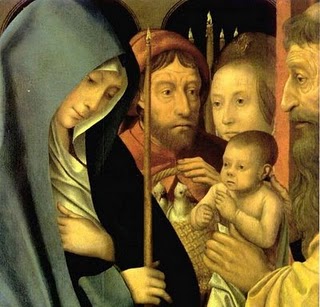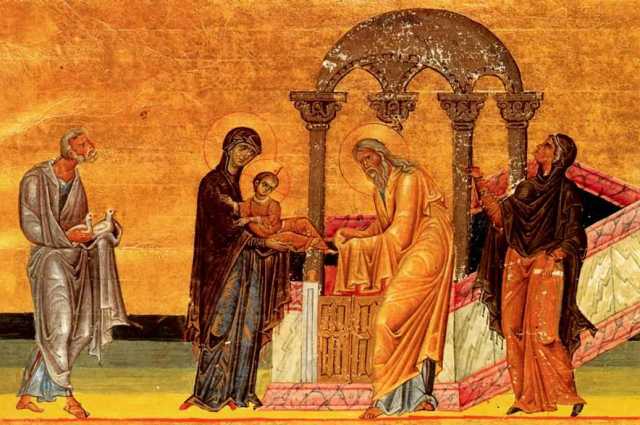
This 10th century Byzantine manuscript illumination depicts the Presentation of Christ when he was 40 days old, described inthe Gospel of St. Luke.
In the Eastern Orthodox Church, the Presentation of Jesus–an early episode in the life of Jesus, describing his presentation at the Temple in Jerusalem is described in the Gospel of Luke and which combines the purification rite with the Jewish ceremony of the redemption of the firstborn (Luke 2:23–24)–is celebrated as one of the twelve Great Feasts, and is usually called Hypapante (“Meeting” or “Encounter” in Greek).
In this episode, Christ encounters the elderly Simeon and Anna, representatives of the Chosen People who anxiously await the coming of the Messiah. The emphasis is less on his presentation in the temple (which was to “buy back” the first-born son, a Jewish practice that looks back to the death of the first-born in Egypt) or the purification of his mother (women were considered impure because of the blood shed during childbirth) and more on this face-to-face meeting of Christ and those who look for him. This encounter becomes the model for the encounter between Christ and all those who pray, receive Holy Communion, or otherwise look to meet Christ in the circumstances of their own lives. Simeon and Anna become the model for all the faithful throughout history.
In Western Christianity, there is an additional name for this day: Candlemas. This feast day is also known as the Purification of the Blessed Virgin or the Presentation of the Lord. In the Roman Catholic Church, the Presentation is the fourth Joyful Mystery of the Rosary. Also, in the Latin Rite of the Catholic Church, the Anglican Communion and the Lutheran Church, the episode was also reflected in the once-prevalent custom of “churching” new mothers–coming to church for the first time–forty days after the birth of a child.
